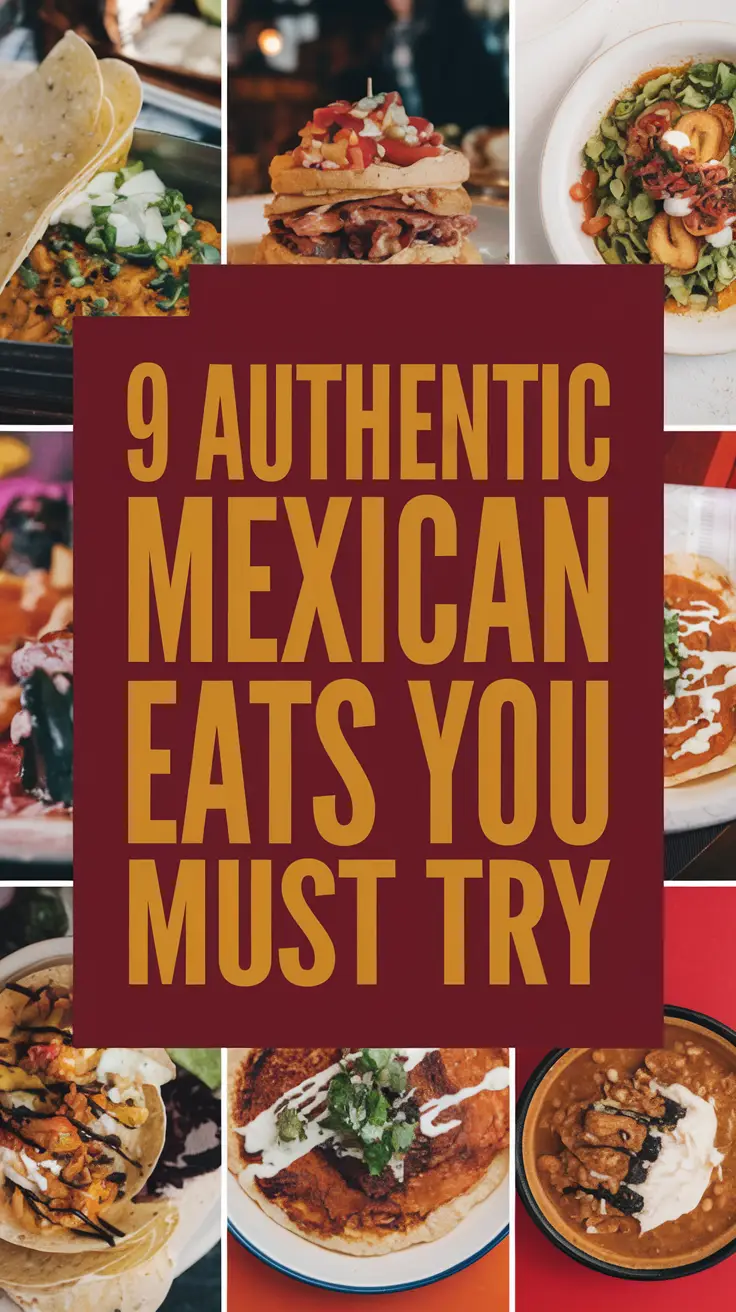
Let me start with a moment etched in my memory like salsa on a white shirt.
It was my third time docking in Cozumel, one of those perfect Caribbean cruise days when the sun seems just a bit kinder and your head is still buzzing from the midnight margaritas. Already full from the ship’s breakfast buffet (note to self: second helpings of waffles before shore excursions is ambitious), I stumbled upon a tiny food stand tucked between a jewelry shop and a rows-of-tank-tops souvenir hut.
“Try the cochinita pibil,” said the vendor, eyeing me with the kind of confidence only someone who knows they’re about to change your life has.
So, I did. And friends, that slow-roasted pork, marinated in achiote and citrus, nestled in a warm corn tortilla—let’s just say it made me rethink everything I thought I knew about tacos.
That’s when I realized: experiencing real Mexican cuisine during a cruise stop isn’t just possible—it’s essential.
Here’s how to do it like a seasoned cruiser (and avoid the trap of the “Americanized burrito combo” at the port food court).
1. Ditch the Dockside Dining
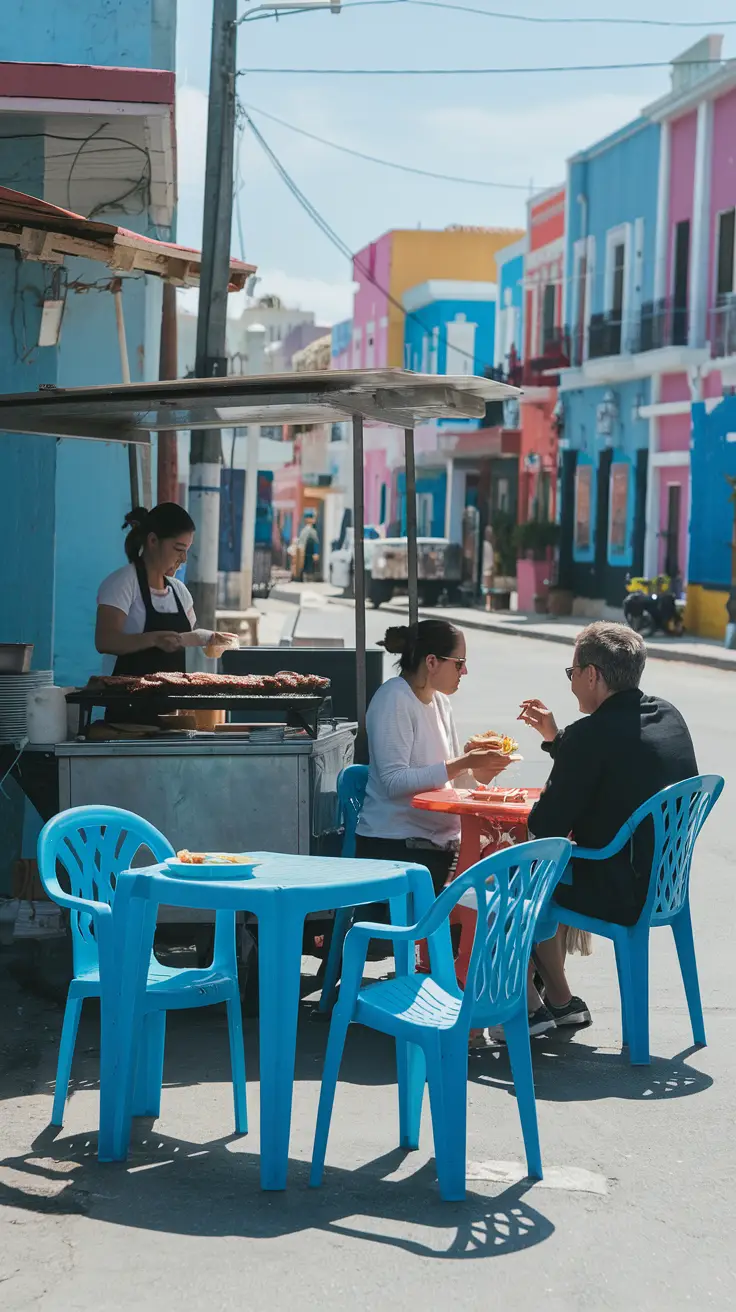
Here’s the truth that cruise brochures won’t tell you: the best Mexican food is almost never found within sight of the ship.
The port eateries often cater to tourists in a rush, dishing out nachos and frozen margaritas made with “not-quite-tequila.” If you want the real stuff—handmade tortillas, mole that took three days to make, tamales made by someone’s abuela—you’ve got to venture farther than five minutes from the gangway.
Pro Tip: Ask your local tour guide, cab driver, or that friendly souvenir vendor where THEY eat lunch. You’ll quickly learn the golden rule of shore dining: Go where the locals are.
2. Join a Local Food Tour (That Isn’t Cruise-Sponsored)
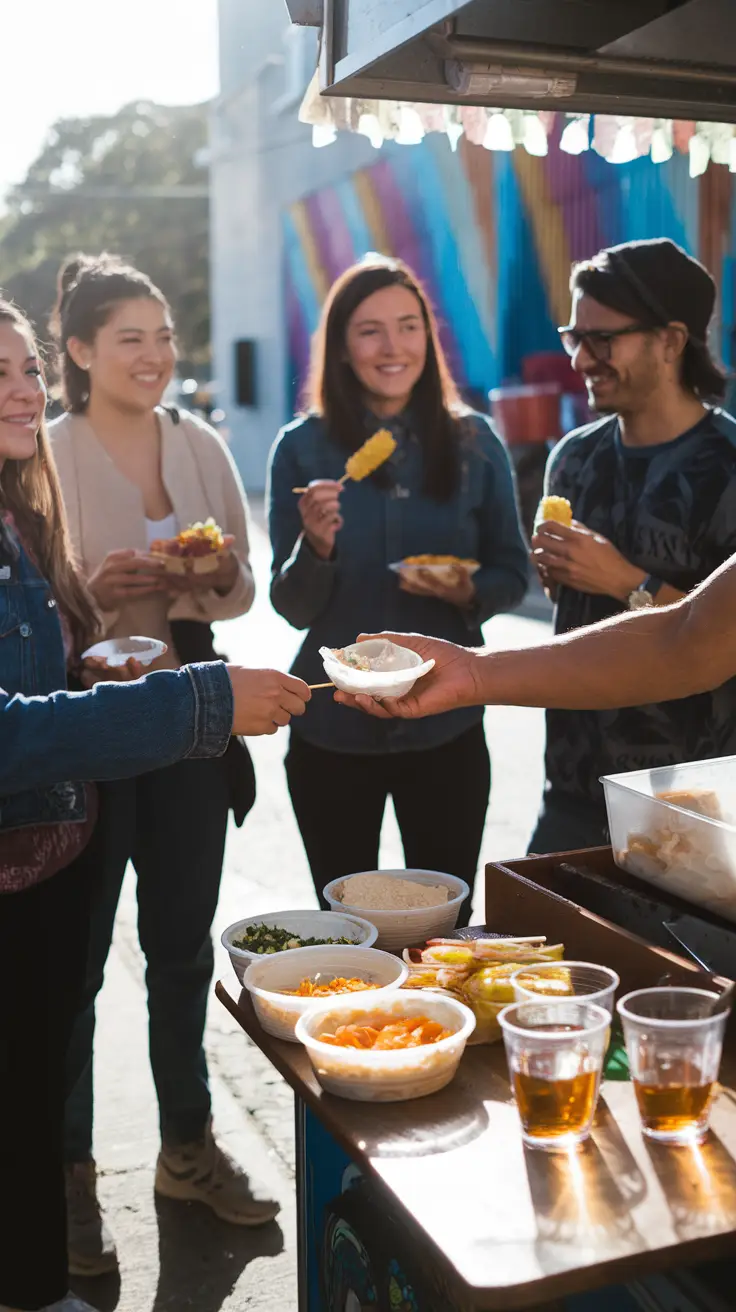
Hang on—I’m not hating on cruise-organized excursions. They’re reliable, safe, and timely. But if you want to taste the REAL stuff—sopes cooked on a comal fresh from a family kitchen, or elote slathered with cheese and chili sold from a cart by the plaza—you’ll want to book independently-run food tours.
Cities like Puerto Vallarta, Ensenada, and Costa Maya have small-group food walking tours led by locals who know every mole stand and taco truck from here to Guadalajara. Bonus: many include mezcal tastings. Sip responsibly. Or at least waddle responsibly.
Insider Tip: Check the timing and always allow wiggle room to return to the ship—they won’t wait if you get too caught up hoop-dancing after your fifth bite of carne asada.
3. Explore the Mercado (And Eat What You Can’t Pronounce)
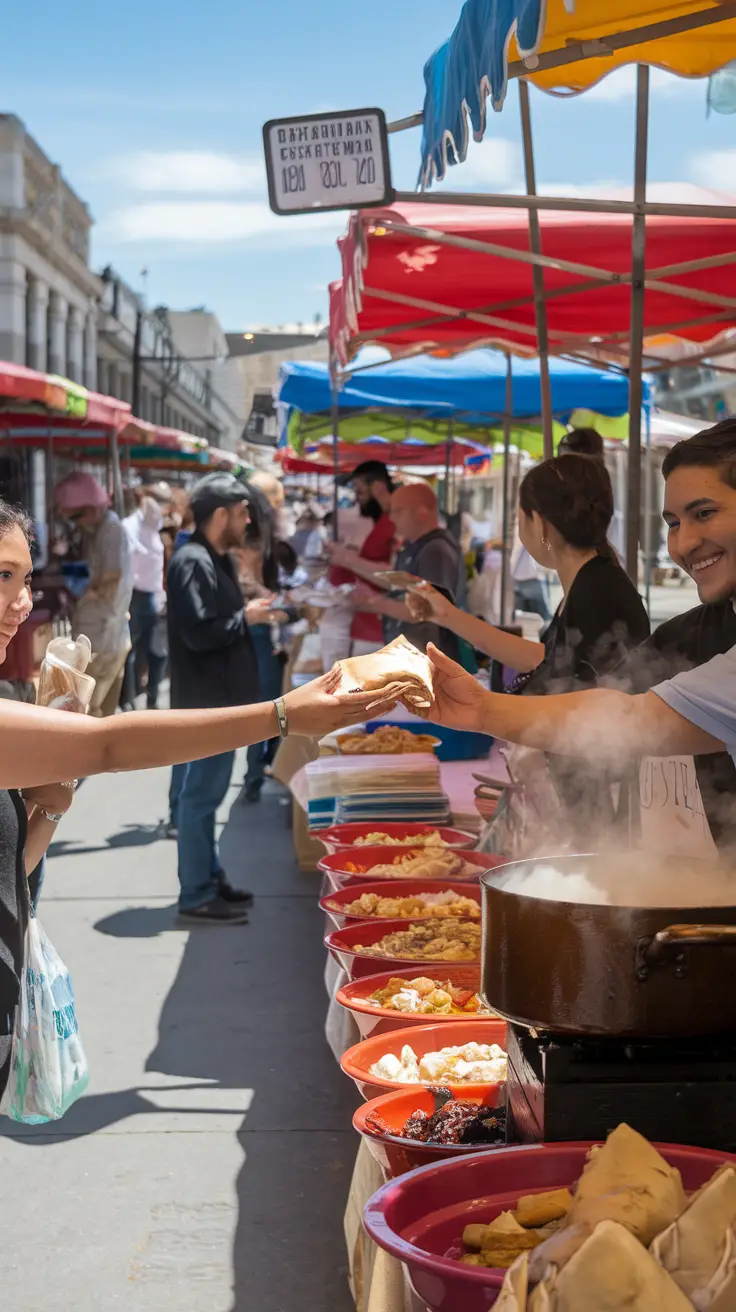
Nearly every Mexican port town has a central food market, or mercado, alive with colors, smells, and sounds that make you feel like you’ve tumbled into a culinary dream.
From fresh juices to chile-relleno-filled tortas, this is where home-cooking comes alive. Don’t be afraid to point and ask “¿Qué es esto?” (What’s this?)—locals are usually delighted to share their food pride, even if you massacre the pronunciation.
Don’t Miss:
- “Marquesitas” in Progreso – Like crepes gone wild. Think Nutella AND cheese. Yes, together. It works.
- “Birria” in Mazatlán – A spicy stew (sometimes goat, sometimes beef) traditionally eaten “con todo”—with all the fixings, including onions, cilantro, and tears of joy.
4. Try Street Tacos (But Be Strategic)
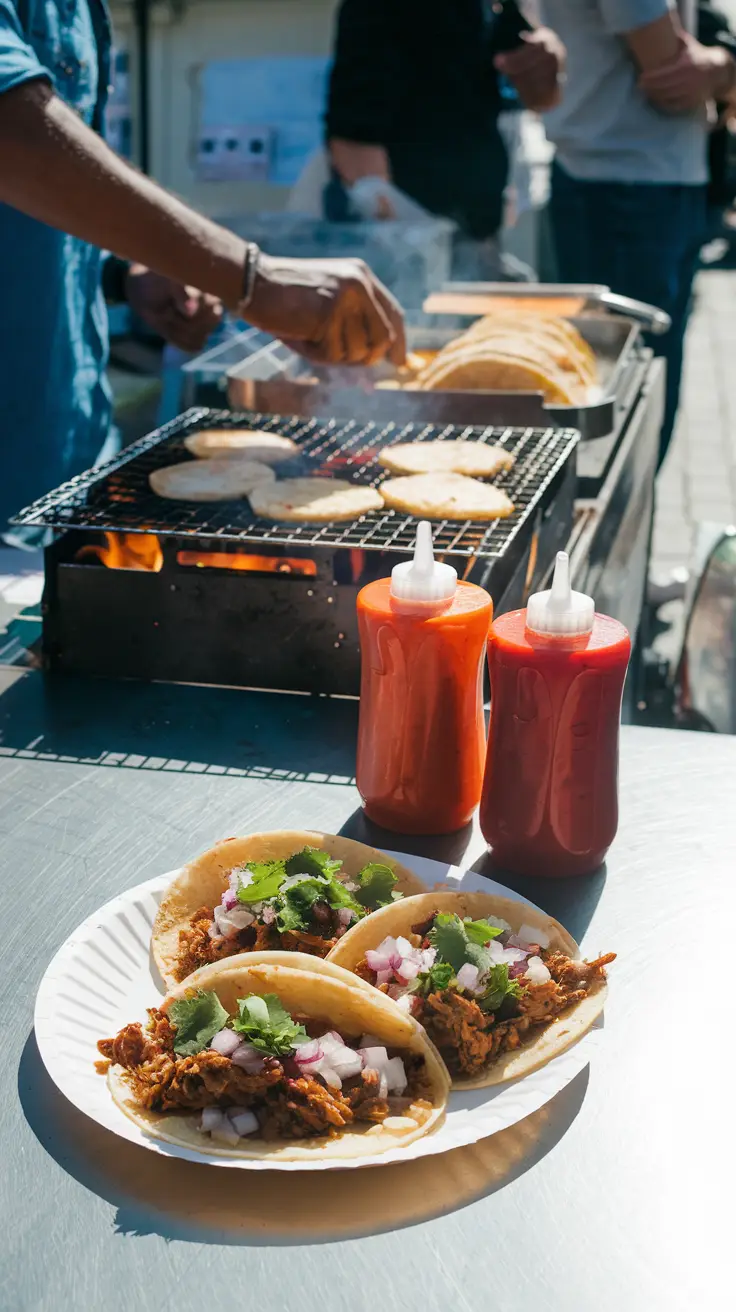
Yes, the best tacos are on the street. No, not every cart is created equal.
Look for a queue of locals and a busy grill. If the ingredients are flying fast, that means freshness and turnover—two keys to safe and delicious street dining.
Insider Tip: If you see a station with five different kinds of salsa, lay out a plan like a general before a battle. Green often means mild. The dark red? That’s where your tastebuds go to die—or transcend. Proceed cautiously.
5. Go Beyond Tacos: Discover Regional Specialties
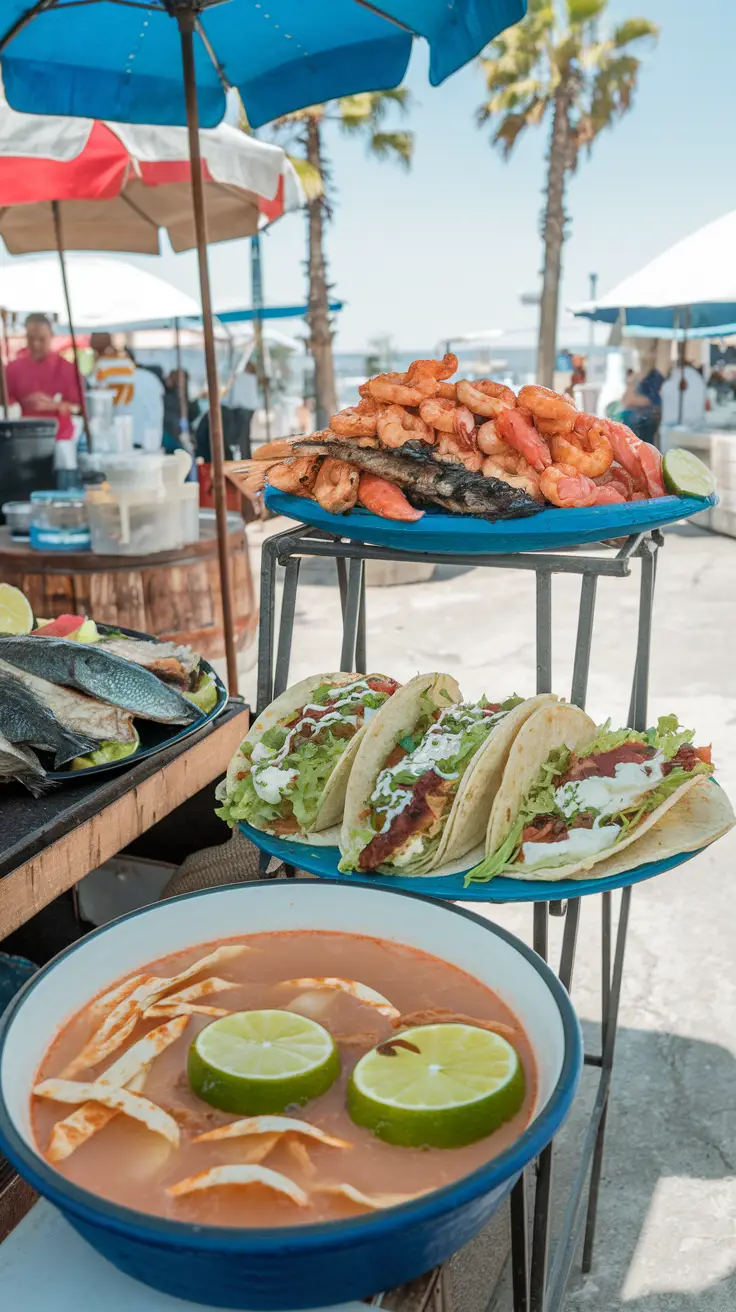
Mexican cuisine is not a monolith. It’s a tapestry richer than the embroidery on a Oaxaca blouse.
In different ports you’ll find:
- Cozumel: Yucatán-style cuisine. Try sopa de lima (lime soup) and anything with achiote spice.
- Ensenada: The birthplace of the fish taco. Beer-battered, cabbage-topped, and a squeeze of lime—glory in a tortilla.
- Puerto Vallarta: Coastal meets mountain. Look for shrimp-stuffed chiles or “pescado zarandeado”—grilled snapper marinated in adobo.
Challenge Yourself: Skip the standard chicken and ask for the house special. The flavors you uncover will follow you home (and so will your attempt to replicate them. Spoiler: it won’t taste the same. Just book another cruise.)
6. Book a Cooking Class with a Local Chef
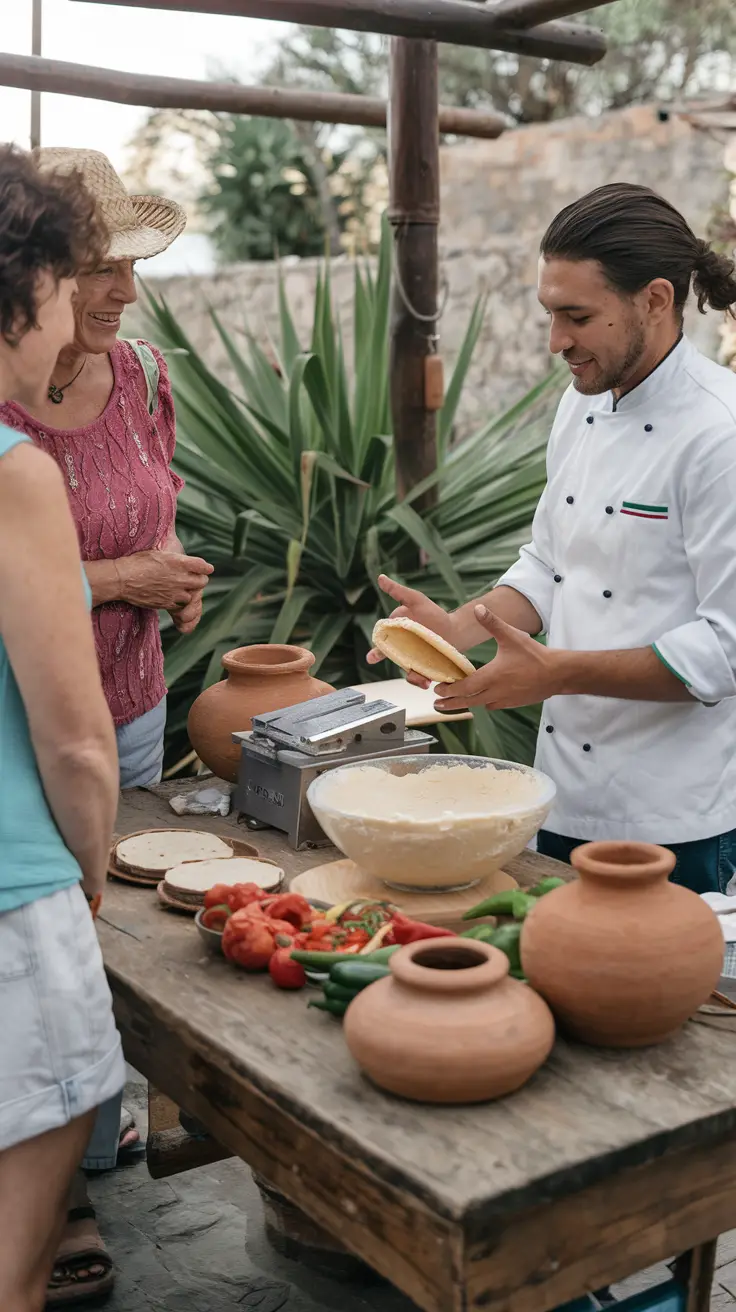
Want to do more than eat? (OK, “more than eat” might be a stretch—but hear me out.)
Some Mexican ports offer half-day shore excursions where you cook alongside a Mexican grandma, hand-rolling tortillas and learning how to build a proper mole (hint: it’s not just “throw in some chocolate” like your roommate in college thought).
These classes are intimate, fun, and worth every peso.
Surprise Bonus: These sessions often finish with a shared meal and, if you’re lucky, a cold cerveza or shot of smoky mezcal. You’ll leave full and with an arsenal of kitchen wisdom.
7. Skip the Chain Restaurants—Even if They Look Familiar
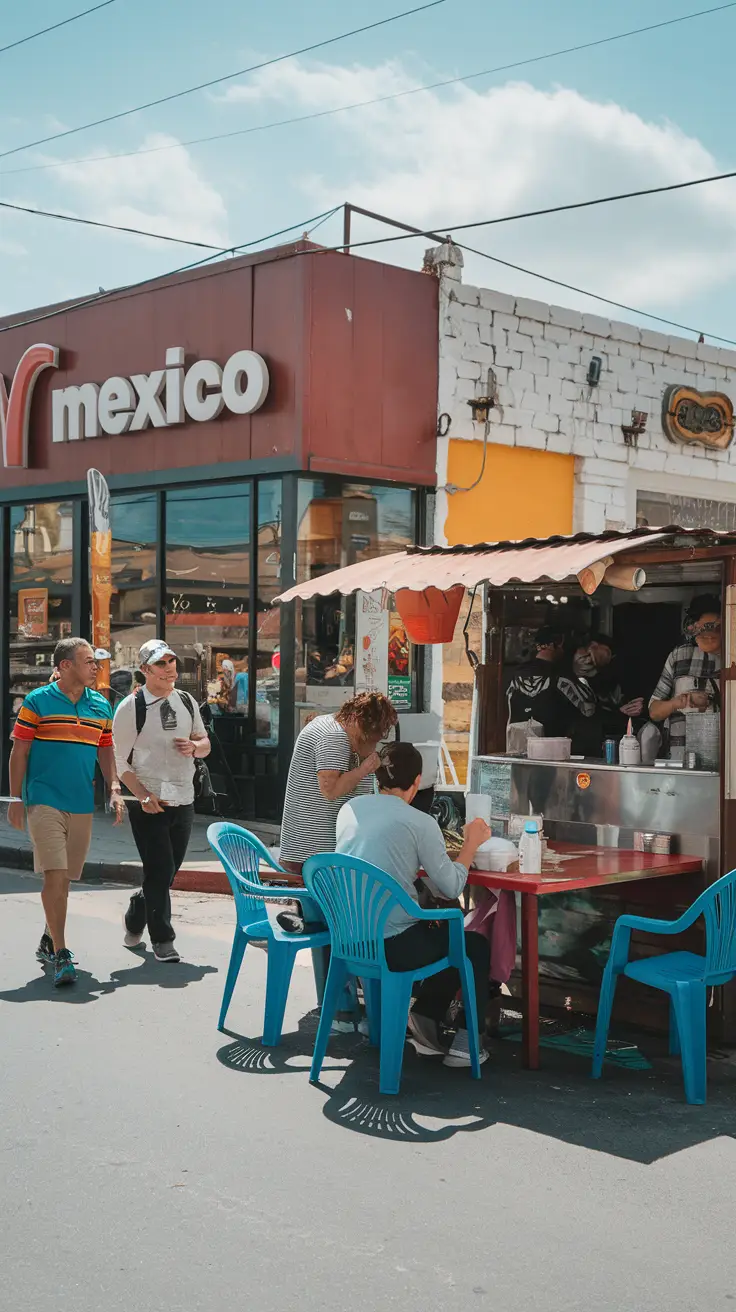
Yes, Señor Frog’s and Carlos’n Charlie’s are institutions. Yes, the frozen drinks are gigantic and occasionally arrive inside inflatable parrots.
But if authenticity is your goal, keep walking. These places are tourist magnets, not epicurean havens.
Cruise Wisdom Nugget: Eating at Señor Frog’s in Mexico is like going to Olive Garden in Rome. Fun? Sure. Memorable? Maybe. Authentic? Not even close.
8. Time Your Stop with Local Food Festivals
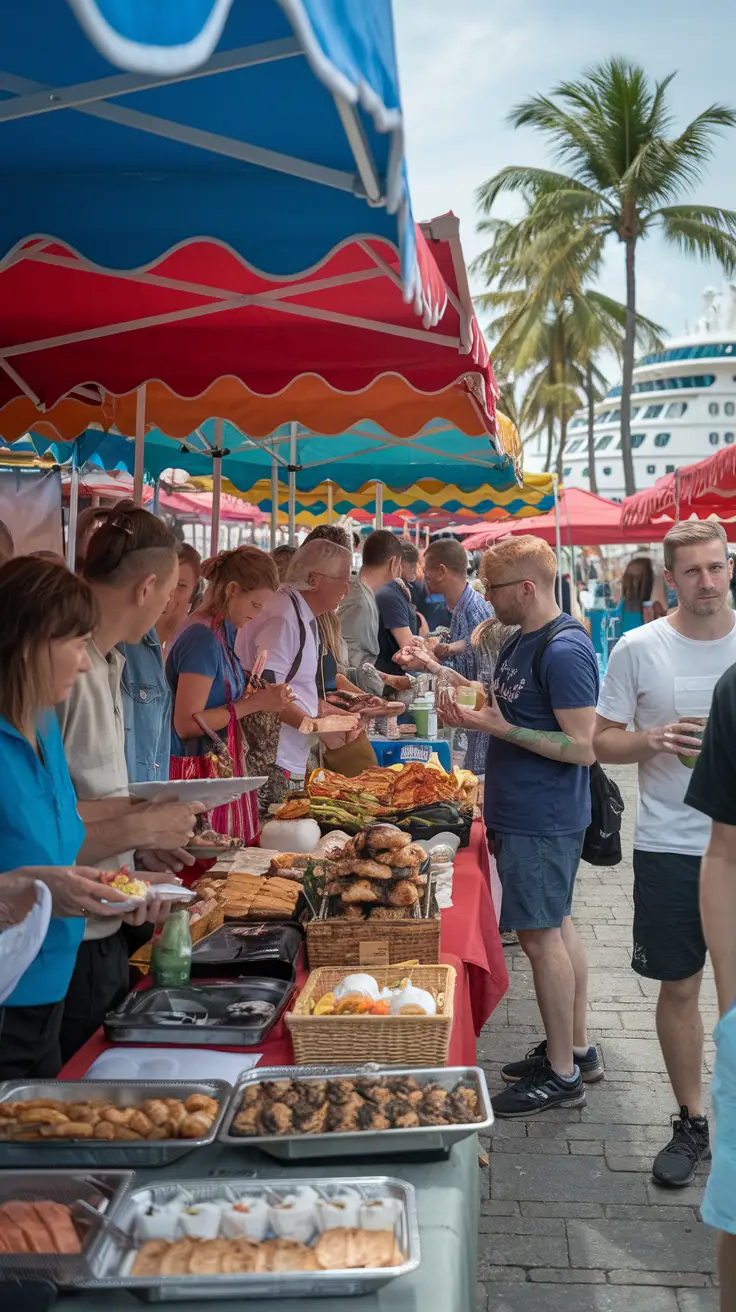
This one’s for seasoned cruisers who like to plan ahead.
Sometimes, your cruise stop might coincide with a local fair, street festival, or holiday celebration—and this, my friend, is when the culinary gods smile upon you.
Ask your cruise line or do some pre-trip Googling. If your port day aligns with Día de los Muertos, Independence Day (Sept. 16), or a local patron saint celebration, you’re in for a feast rivaling the midnight buffet back on board—just with more piñatas and better tacos.
9. Bring the Flavors Home (Legally)
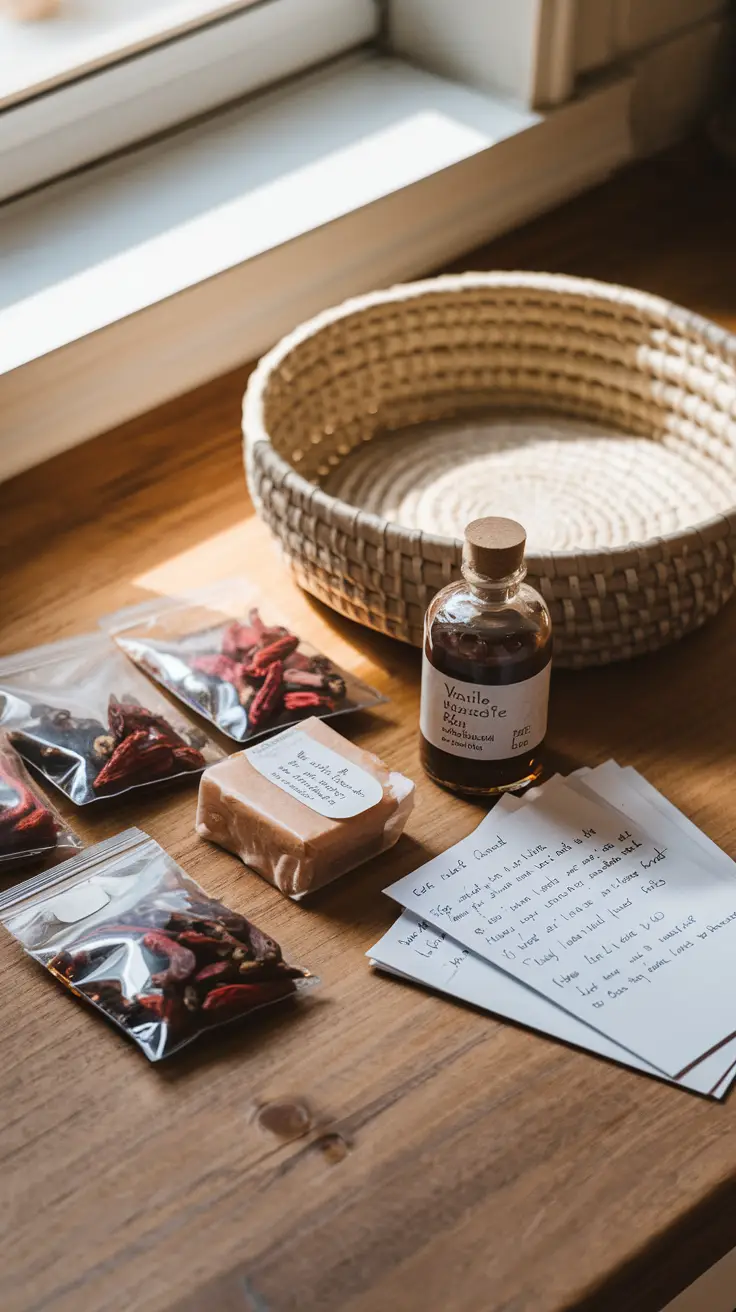
You can’t pack an entire mercado in your suitcase (well, you could try, but Customs won’t love that). But you can bring home:
- Bags of dried chiles (guajillo, pasilla, ancho)
- Achiote paste from the Yucatán (keep it sealed)
- Cajeta (Mexican goat milk caramel)—SO much better than fudge
- A small bottle of real Mexican vanilla (check customs allowances)
- And yes… a recipe or two from that cooking class
Bring Ziploc bags or small containers for transport. And remember: hot sauces over 3.4 oz. go in checked luggage. Don’t ask me how I learned that one… rest in peace, beloved habanero bottle.
Final Thoughts: More Than Just a Meal
Authentic Mexican cuisine isn’t something to just check off your “shore excursion” list. It’s a conversation with culture, a bite of history, and sometimes, a complete surprise attack on your spice tolerance.
By venturing beyond the tourist traps and taste-testing your way across the port towns, you’re not just eating—you’re connecting. With people. With place. With flavors that linger longer than your sunburn.
So next time your ship docks in Mexico, tighten that belt (or loosen it… ideally the latter), trust your nose, and follow the tortillas.
After all, the best souvenirs don’t go on your shelf—they live in your belly and your memories.
Buen provecho—and may your tacos always be warm, your limes juicy, and your salsa just spicy enough to earn some respect.
— Bonus Tip: Pack antacids. Eat fearlessly. Repeat.
